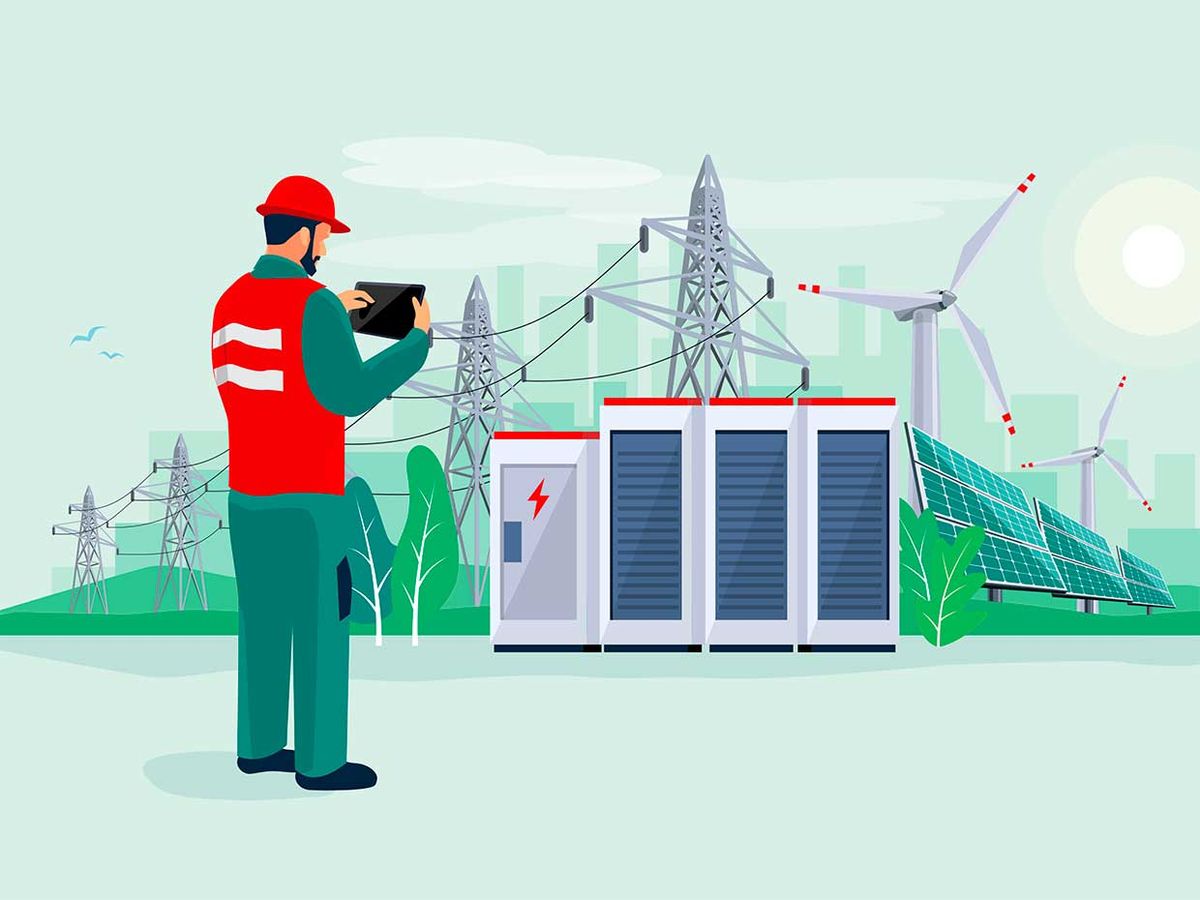THE INSTITUTE Heavier reliance on renewables and other distributed energy resources (DERs) is central to the world’s ongoing evolution toward a more environmentally friendly and reliable energy landscape. Achieving consistent, high-quality assessments of the interconnections of DERs with electricity grids is an important step. But there’s a hurdle to making it a reality: not enough skilled workers.
That’s why the IEEE Standards Association’s Conformity Assessment Program is working with several utilities on the IEEE 1547 Distributed Energy Resources (DER) Interconnection: Education and Credentialing Program. Partners are Baltimore Gas and Electric, Commonwealth Edison, Dominion Energy, Duke Energy, and Orange and Rockland Utilities.
“We are excited to work with IEEE and the other partners in creating a program that will satisfy the industry need for a qualified workforce…to support ongoing growth of renewables and other DERs around the world,” Joseph Woomer, Dominion’s vice president of grid and technical solutions, said in a news release about the program.
INTERCONNECTION ISSUES
Both commercial and residential installations of battery, combined heat and power, solar, wind, and other DERs are on the rise globally. But various complexities around commissioning the interconnections with the electricity grid have blunted progress.
One challenge is the severe shortage of qualified, credentialed workers to perform the commissioning tasks, especially in developing economies. Also, utilities, DER developers, and owners frequently do not share a common understanding of the requirements and needs—which can lead to missteps, delays, and additional costs.
At the same time, DER vendors are being pressured to roll out new features and capabilities that meet the needs of different implementations in various regions. Utilities are now being pushed more than ever to evaluate and process higher volumes of DER-interconnection applications. And regulators are struggling to keep their jurisdictions’ interconnection rules in line with technology innovations and other industry developments.
ROOTED IN STANDARDS
The credentialing program will be based on the widely adopted IEEE 1547-2018 Standard for Interconnection and Interoperability of Distributed Energy Resources With Associated Electric Power Systems Interfaces, as well as the IEEE 1547.1-2020 Standard Conformance Test Procedures for Equipment Interconnecting Distributed Energy Resources With Electric Power Systems and Associated Interfaces.
IEEE 1547 defines technical specifications for interconnection and interoperability between electric power systems and DERs of every type. Since its development in 2003, the standard has been cited in energy legislation, regulatory deliberations, and utility engineering and business practices in markets around the world. One such example is in the U.S. Energy Policy Act of 2005, which references IEEE 1547 explicitly.
As DER deployment has grown exponentially in the years since IEEE 1547’s initial publication, the standard has been refined to address emerging implementation challenges. Its 2018 update addresses numerous changes related to the increased levels of solar arrays and other DERs on the grid. The U.S. National Association of Regulatory Utility Commissioners passed a resolution last year recommending state public utility commissions and other member regulatory agencies engage stakeholders to adopt IEEE 1547-2018.
The new education and credentialing program being rolled out is designed to address DER interconnection. It is intended to enable training and certification of the standards-based commissioning process for installed DER interconnections.
“Working with the IEEE Standards Association and the other utilities signed on to this effort is an important step to standardizing a safe and reliable approach to integrating more distributed resources on the system,” Wesley O. Davis said in the news release. He is Duke’s director of DER technical standards, enterprise strategy, and planning.
Get Involved
To join in the collaborative effort, email connect_der@ieee.org.
IEEE membership offers a wide range of benefits and opportunities for those who share a common interest in technology. If you are not already a member, consider joining IEEE and becoming part of a worldwide network of more than 400,000 students and professionals.
IEEE Standards Association facilitates standards development and standards related collaboration among individuals, organizations, and governments.



